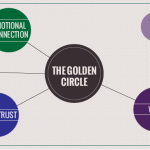How to improve customer service through effective performance management
Performance management is like a game of chess: you have to plan ahead every move. Everybody knows that an efficient performance management program helps companies accomplish their mission and goals. Such a program includes four main components, which, if designed with a focus on customer satisfaction, will promote the companies’ customer service goals and also improve the performance both at individual and organizational level.
However, managers have to bear in mind the fact that considering, designing and redesigning these components individually will not improve performance as effectively as when they are examined and coordinated all together.
These key components are:
- Setting individual and team goals that are aligned with those of the organization;
- Establishing a measurement system accepted by all users;
- Providing accurate and timely feedback;
- Rewarding and recognizing the desired performance.
Now, we shall take a look at each and every component.
1. Setting goals and standards based on customer serviceFirst and foremost, you have to determine who your customers are. Next, customer service goals and standards must not be set arbitrarily, but rather based on customer research data, at organizational, departmental and individual level.
Asking customers what they want is the most important part when setting customer service standards and goals. Various methods are used, among which we mention:
- one-on-one interviews of key customers;
- polling front-line service employees;
- focus groups;
- questionnaires allowing for customer comments;
- key decision maker mini-groups pulling together the major stakeholders of the organization.
Using a variety of these methods will provide a meaningful set of attributes defining quality for customers. Once the list of attributes is established, the organization has to use key performance indicators (KPIs) in order to measure the current performance against the customer-desired one.
2. The measurement systemWhen developing a measurement system, organizations should take into account the following steps:
- Identify the goals that need to be measured;
- Develop performance indicators to measure the products, services and/or outcomes established in the goal setting process;
- Involve employees; thus, they would trust the measures that are implemented;
- Use multiple measures and inputs – just one measure will not provide accurate results;
- Provide flexibility – the system should allow for change;
- Provide feedback – it promotes performance improvement;
- Analyze the data;
- Last but not least, be patient – performance management is a process that stretches over time.
Outcome measures – they show organizations where they stand in their efforts of achieving their goals. They include:
- measuring customer satisfaction with the product/service;
- measuring the number of complaints, complements, awards or recommendations;
- comparing the final product to the customers’ requirements.
Process Measures – monitor the tasks and activities that lead to a given result. They include:
- cycle time;
- error rate;
- wasted time or supplies;
- other activities specific to the work type.
Process flowchart to identify process measures – in order to determine the key process measurements, organizations use flow charts to track the work process. This allows them to pinpoint the parts of the process that need to be measured in order to make improvements.
Measuring customer dissatisfaction – knowing what doesn’t work allows changes to occur. Thus, managers and employees have guidelines to follow in order to know what needs to be improved.
3. FeedbackFeedback needs to be:
Specific – feedback works best when it’s related to a specific goal. Thus, employees know exactly what they are doing right or wrong.
Timely – if employees have to improve their performance, then the sooner they know, the better. Plus, it’s a lot easier to provide feedback on actions that have just occurred, as the managers have everything fresh in mind.
Appropriate – feedback should be given in such a way that the employees do not perceive it as bad criticism, but rather as something positive. They need to be aware that it is for their own good. However, it’s not supposed to be all sugar and honey because they might misinterpret the message. When presented, the feedback should envisage what an employee did right and then identify what needs to be improved in the future.
Feedback sourcesPerformance feedback on customer service can come from the following sources:
- Customers (through customer surveys);
- Work measurement systems (e.g. statistical process control measures);
- Supervisors, managers or team leaders (on the company’s overall customer service performance, but also on individual and team performance regarding meeting particular goals);
- Peers (for different perspectives);
- Subordinates (extremely useful to supervisors and managers when addressing customer service goals).
Monetary or nonmonetary?
Opinions are divided in this matter. Some lean towards monetary recognition, while others promote nonmonetary rewards.
Money recognition supports performance improvement through goal setting by the following mechanisms:
- Money can increase goal acceptance or goal commitment;
- Money can induce people to set goals;
- Money can lead to setting higher goals.
However, when money is involved, people tend to put a lot of pressure on them and therefore, their performance may turn out to be weaker than it would normally be.
Nonmonetary recognition can often be more valued by employees. For instance, at IBM, goal attainment is immediately followed by rewards (some monetary, some nonmonetary). But employees state that they cherish more those rewards that have nothing to do with money, like having their names on the bulletin board with a notation saying 100%, a party on their behalf or congratulatory notes from their superiors.
Apparently money can’t buy happiness after all.
References:
Image Source: Amirdale Chess Club
Tags: Management performance, Performance Measurement





